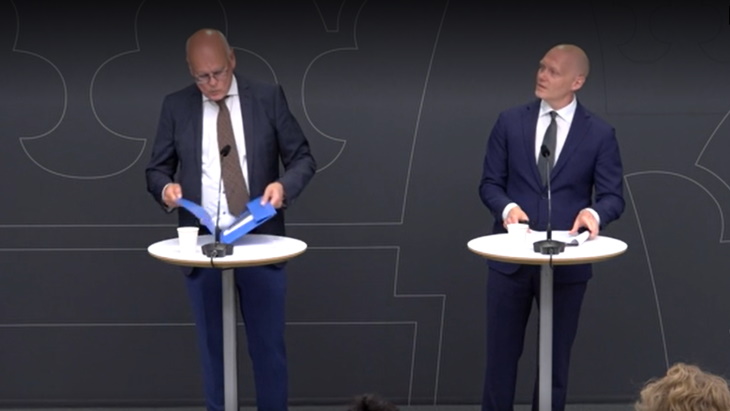
In October 2022, Sweden's incoming centre-right coalition government adopted a positive stance towards nuclear energy. In November 2023, it unveiled a roadmap which envisages the construction of new nuclear generating capacity equivalent to at least two large-scale reactors by 2035, with up to 10 new large-scale reactors coming online by 2045.
On 20 December last year, the government appointed Mats Dillén to produce and submit proposals for models for financing and risk sharing for the construction of new nuclear power reactors. According to the mandate, the proposed models must be designed so that nuclear power with a total output of at least 2500 MWe - equivalent to the output of two large-scale reactors - must be in place by 2035 at the latest.
In designing the financing and risk sharing model, the investigation was required to describe and analyse models that have been used in other countries, mainly focusing on Europe. The proposal must be compatible with current rules on state aid and competition. Furthermore, the investigation shall submit necessary legislative proposals.
Dillén has now presented the findings of the study.
The report says the investigation "identified conditions which give rise to a discrepancy between a private investor's business case for new nuclear power and the socioeconomic equivalent. It is concluded that efficiency reasons give a rationale for the state to support investments in nuclear power".
By analysing the financing models used in other countries, with a focus on European projects, the investigation concludes that: models that allocate most of the risks to the electricity producer provide strong incentives for cost-efficiency but comes with a high capital cost; the trend is for European states to bear more risk in nuclear power projects to reduce the cost of capital and enable investments in new nuclear power; government involvement in nuclear power projects comes with a cost of monitoring; and in designing a financing and risk sharing model, there are potential benefits in using forms of support that have already been approved by the European Commission, for a more efficient state aid assessment process.
Proposed model
The proposed model aims to: provide electricity production at a low cost in relation to the investment cost of new nuclear power; ensure that there are strong incentives for cost-efficiency during the construction phase and to preserve incentives to respond to market price signals during the operational phase; design support measures that address identified market failures; provide a sufficient expected return for private actors to be willing to invest in new nuclear power; and live up to the criteria outlined for state aid approval.
The financing and risk sharing model consists of three main components that lead to a lower cost of capital that facilitates new investments in nuclear power at a low cost. The components are: state loans to finance investments in new nuclear power, which lowers the cost of capital; a two-way contract-for-difference signed between the state and the nuclear power producer; and a risk and gain-share mechanism that gives investors a minimum return on equity.
The investigation proposes that the contract-for-difference for new nuclear is financed by all electricity customers. The cost is expected to amount to under SEK0.02 (USD0.002) per kWh.
"The financing and risk sharing model contains several parameters that need to be determined and regulated in civil law agreements between the state and the project owners," the report says. "Ultimately, the parameters will be decided through negotiations between the state and investors in new nuclear power. At that time more precise cost estimates should be available based on tenders from selected suppliers. Moreover, both model design and parameter values will need to be justified in a future state aid assessment."
The investigation concluded that a new legislative act should regulate conditions for receiving the support, the support measures, and what an application must contain. The act is proposed to enter into force by 6 May 2025.
"Regarding the directive's instructions to propose a timeline and activity plan for implementing the model, as well as highlighting other measures that could reduce costs and shorten permitting and construction processes, the investigation has concluded that these tasks are best handled by other investigations that have been initiated by government," the report adds.
"It is about 40 years since the last nuclear power plant was built in Sweden," it notes. "The first new reactors are expected to be relatively expensive due to the lack of current experience and the need to build up supply chains. The model is intended to finance a nuclear programme of 4000–6000 MW, corresponding to about four large-scale reactors. After that, it is expected that the costs and risks associated with building new nuclear will decrease, and with that the need for government support."
In January this year, Swedish Energy & Industry Minister Ebba Busch announced the appointment of Carl Berglöf as national nuclear power coordinator as the country embarks on a programme to expand its nuclear generating capacity. As part of the role, he will be expected to continuously support the government in following up and analysing how the work with the expansion of nuclear power is progressing and identifying the need for supplementary measures. The assignment must be finalised by the end of 2026.